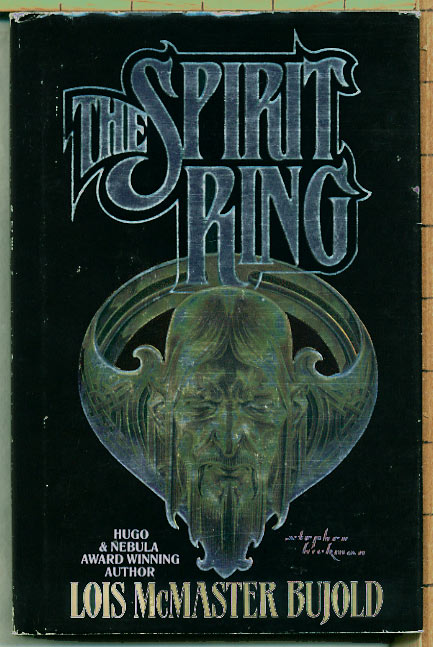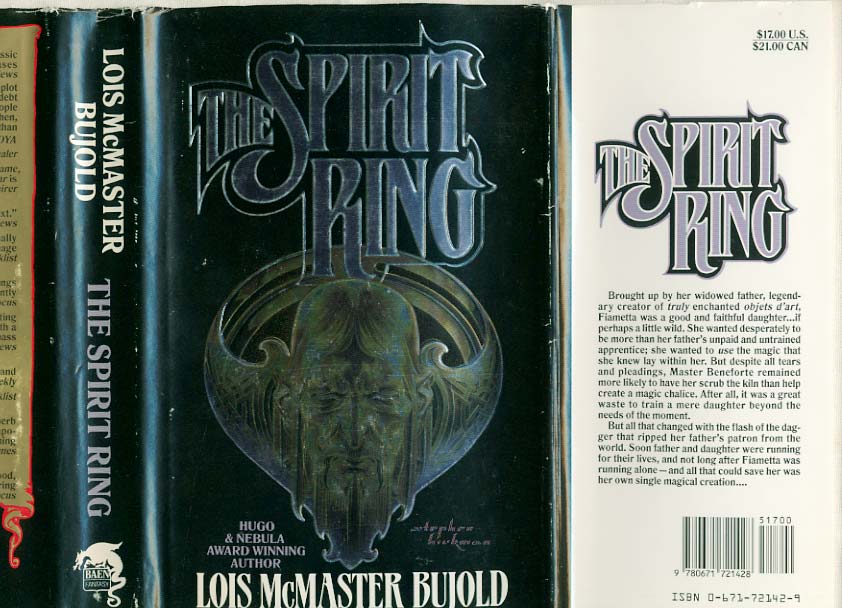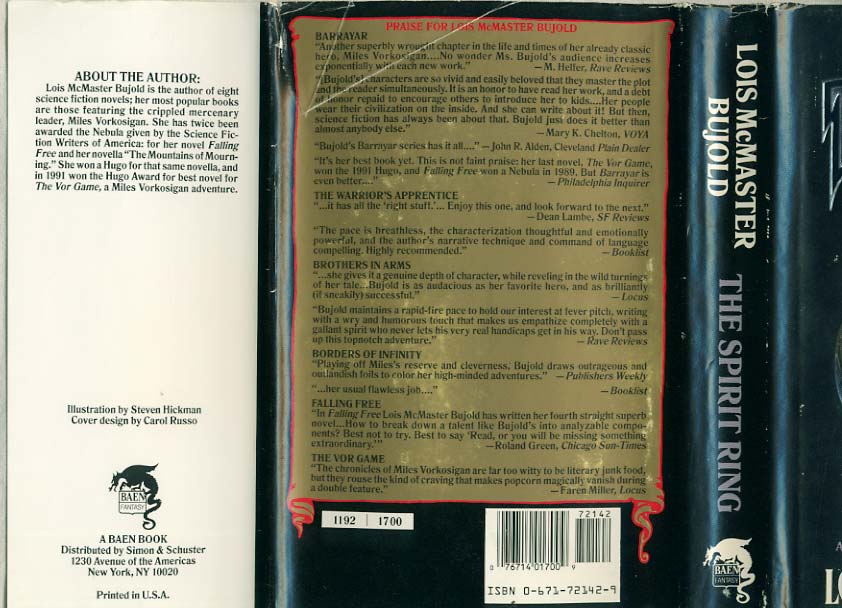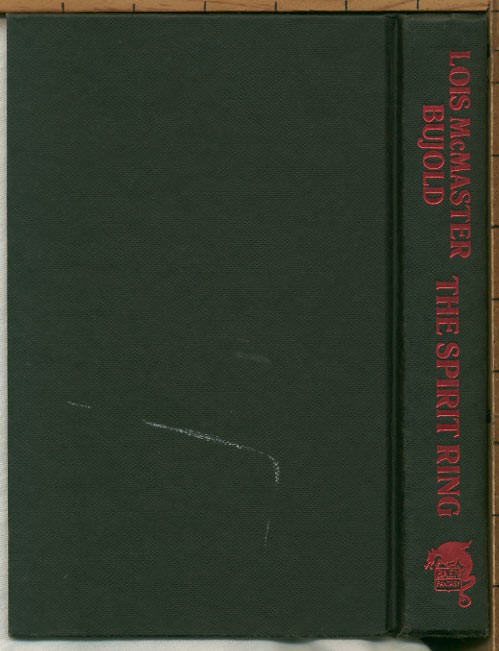
author:
title:
Bujold, Lois M.
THE SPIRIT RING
book-date: 1992
edn-date:
printing:
format:
cvr art:
cvr price:
GRADING:
1992
1st
Hardcover
Steve Hickman
$17.00
Book= VG-
Dustjacket= VG-
1-1/4" tear at upper left of back cover and 2 associated fold-traces, 1/8" spinal tilt, back cover has faint corner imprint (see scans.) Use of foil on cover makes color reproduction difficult (the image should look more gold than green.)
Bujold's first hardcover original, and her first venture into fantasy.
After 5 years of increasing success in the SF field (Barrayar from the previous year would be her 2nd Hugo-winner) - Lois Bujold turns her hand to fantasy: The Spirit Ring. I got my copy autographed, and have reread it several times. This is the kind of book that I will sell as many nice copies as I can find - highly recommended.
[For a decent plot summary/set-up, I'm using excerpts from 2 reviews]: "…a standard, straightforward, well-told tale of murder and magic in early Renaissance Italy. Bujold doesn't take risks, or go off into orgies of weirdness, but blends magic most convincingly with the politics, religion, and arts so vital in Italy at the time. (The church accepts, uses, and even licences and oversees the use of magic.) There's a strong sense of period, but by limiting events to one small duchy Bujold largely avoids the milieu of the Medicis, and keeps a medieval flavor for her fantasy.
…In the style of Cellini, Prospero Beneforte is a highly-skilled goldsmith, but he is also a formidable sorceror. His latest works are a magical saltcellar and a bronze statue of Perseus, with which he hopes to gain favor (and money) from the Duke. The saltcellar is to be presented at a banquet celebrating the betrothal of the Duke's daughter - but the impatient and ambitious bridegroom decides to hurry things along during dinner by killing the Duke and taking over the duchy, with the aid of black arts. Prospero Beneforte is forced to run, with his loyal daughter Fiametta. …She has been assisting her father all along, learning more of his magic than most suspect. When her father dies, the usurper's men steal his body for nefarious purposes. Their lord has ways to trap souls in rings and use them for power, and with the old goldsmith's powers, he would be unstoppable. Fiametta vows to do something, even though as a woman she has no rights and gets no respect from the men around her. Her determination moves the plot…" [-Carolyn Cushman (Locus, August 1992]
"…while the finale features some splendid wizardly fireworks, it's an almost intimate tale that she tells. (This is going on the theory that the fate of a small Renaissance dukedom can be considered intimate.) We have a master metal worker and sculptor, one Master Beneforte, who also has some skill in magic, but only the whitest, church-approved sort (mostly.) For we are in a Renaissance in which magic and wizardry are taken for granted, though not exactly common, since learning it is as time consuming and tedious as any art or skill, and buying it takes a great deal of money. The Church itself has some skilled practitioners: the duchy's highest-ranked churchman, Monreale, is one of those…
One Lord Ferrante more or less takes over the dukedom of Montefoglia under the pretext of betrothal to the duke's daughter. In the initial fracas of this dastardly action, Beneforte flees with his motherless daughter Fiametta, who has aspirations to wizardry also and who has made a love token ring for the handsome captain of the guards, Uri Ochs. She sees him struck down as they flee, but the spell has been other directed in any case, to Uri's younger brother, Thur, a miner in Switzerland who feels a sudden urge to join his brother. Beneforte dies at the hands of two of Ferrante's bravos, and his body is take by them: Fiametta is left stranded. She realizes to her horror that Ferrante needs her father's body to make a "spirit ring," an instrument of great power which uses the ghost of a mortal as its driving force, the more knowledgeable the better…
The novel begins with minimal fantasy content; you feel you're reading an historical with a touch of magic rather than a fantasy set in the past. Magic in this world is only one factor of life and hardly rules it. But the story gathers steam, and you become rather charmed by the two protagonists… More and more magical elements are added, and the final dustup, what with rival sorcerers, ghosts, kobolds, bronze golums, and a revolting populace, is quite a do." [-Baird Searles (Asimov's SF, January 1993)]


